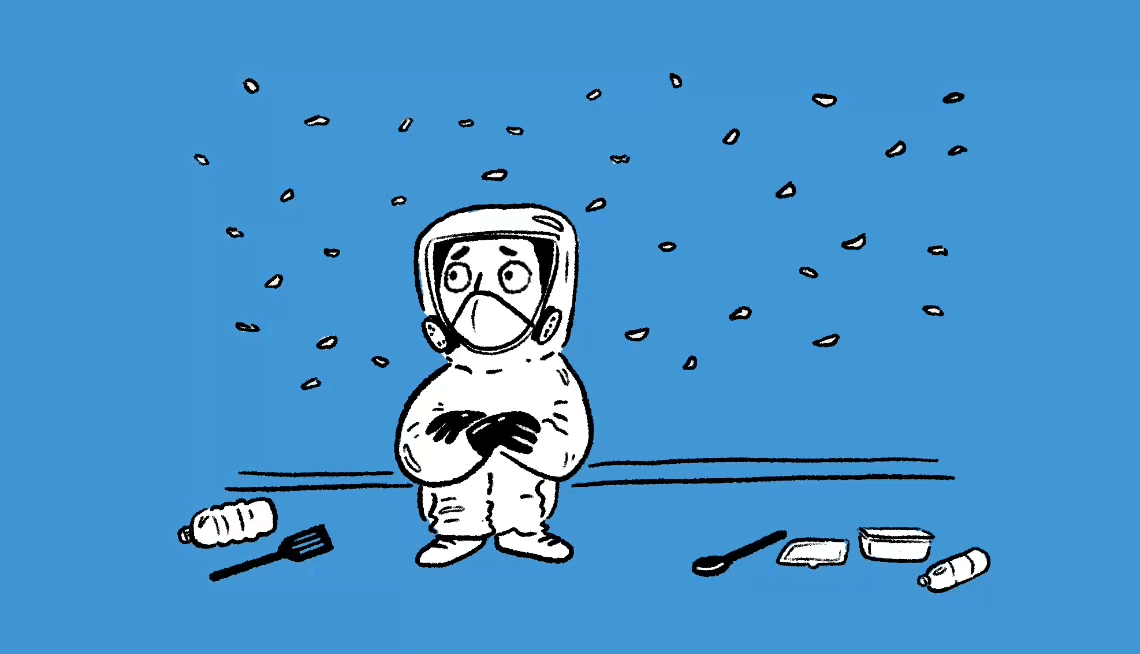AARP Hearing Center


I keep reading about microplastics. What can I do? And does it really matter?
Like many of you, I grew up in a world where plastic was considered a miracle. Now it’s everywhere. It lines our refrigerators, wraps our leftovers and even makes its way into our clothes and carpets. While plastic makes life easier, it doesn’t just disappear once we throw it away. In fact, it’s shedding particles long before it ends up in our recycling bins. Plastic breaks down, slowly and invisibly, into something much smaller — and potentially much more harmful.
These minuscule fragments, less than 5 millimeters in size, are called microplastics, and they linger in everyday places, from plastic food containers and water bottles to synthetic fabrics like polyester, even tea bags. And here’s the kicker: Scientists are finding microplastics in almost every corner of the human body. They’ve been detected in our lungs, colon, liver, kidneys and brain.
That’s not so surprising: It’s estimated that the average person inhales up to 68,000 microplastic particles every day, and this pollution is also found in the water we drink, the foods we eat and the products we use in our homes. Still, like our reader, you may be wondering, “I’m living a long, full life. Are microplastics really something I need to worry about?” As both a doctor and someone who works with older adults every day, I want to answer you plainly. Yes, it matters.
In fact, we’re more at risk than younger folks, because as we age, our immune systems weaken and our bodies become less efficient at detoxifying harmful substances. Microplastics can not only cause inflammation, they may also disrupt metabolic health and interfere with our body’s ability to produce antioxidants.


Ask Dr. Adam
Adam B. Rosenbluth, M.D., is an internist and cardiologist in New York City. Each Monday, he’ll weigh in on your questions about how to make your body work better for you. His AARP book will be published in 2027. Join in on the conversation on social media @dradamrosenbluth to learn to move the needle on your personal health in an achievable way.
To explain my position, I’m going to mention two recent studies — and there are dozens more. The first, published last year in The New England Journal of Medicine, found a link between microplastics detected in arteries and an increased risk of heart attack, stroke and death.
Second, a 2025 study published in Nature Medicine found that people with dementia had up to 10 times more microplastics in their brains than those without cognitive decline. Scientists haven’t yet figured out whether those plastics may be contributing to the development of dementia or if something about the disease process makes them accumulate in the brain.


































































You Might Also LIke
Insider Secrets on Integrative Medicine
Dr. Victoria Maizes shares 21 ways a holistic approach to health can heal what ails you
Are Seed Oils Really Bad for Your Health?
Experts say seed oils are healthier than social media claims. Here’s what the science shows
8 Ways Sugar Speeds Up Aging
Added sugars can speed up the aging process